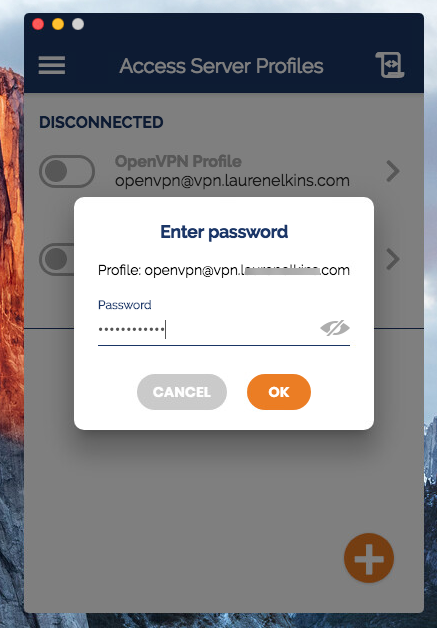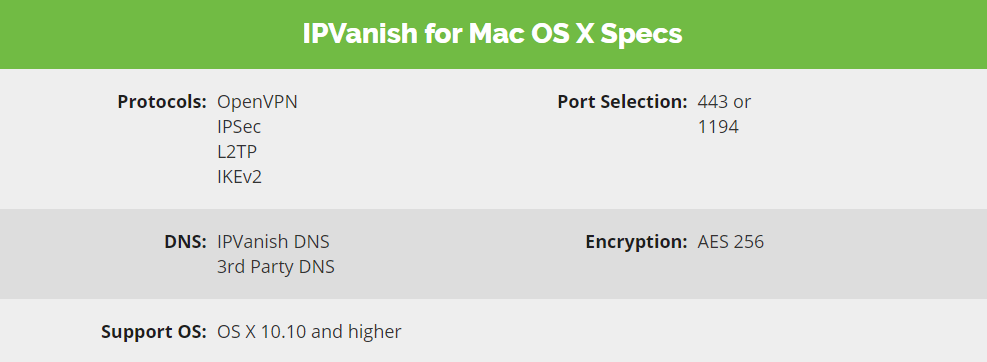

- #Openvpn client mac os 10.14 mac os x
- #Openvpn client mac os 10.14 install
- #Openvpn client mac os 10.14 software
- #Openvpn client mac os 10.14 license
- #Openvpn client mac os 10.14 series
(Click here for step-by-step instructions on this process.)

#Openvpn client mac os 10.14 license
Other license options available as well, including perpetual licenses. There are options for 1 user (L-AC-PLS-3Y-S5) or packets of licenses including one year for 25 users (AC-PLS-P-25-S). You need to purchase client license(s) from a partner like CDW or through your company's device procurement. This toggled section provides details and tips for beginners.
#Openvpn client mac os 10.14 install
Install An圜onnect Secure Mobility Client Beginner Information An圜onnect - v4.10.x ( Download latest).Private Network (VPN) access through Secure Sockets Layer (SSL) and Internet Protocol Security (IPsec) Internet KeyĮxchange version2 (IKEv2) but also offers enhanced security through various built-in modules.
#Openvpn client mac os 10.14 software
IntroductionĪn圜onnect Secure Mobility Client is a modular endpoint software product.
#Openvpn client mac os 10.14 series
This is very handy when you are on the go and cannot easily change the subnet of the remote network or local network to deconflict them or find a different VPN tech that doesn't exhibit this problem.This article is ONLY applicable to the Cisco Small Business RV34x series routers, not Enterprise products. Neither does there seem to be any need to clean this route up later, I suppose it just disappears when the interface goes away when the connection is lost. There seems to be no need to delete existing routes to this address, and connectivity to this host is immediate, no reconnecting is required. Then, sudo route add -host 192.168.1.5 -interface utun3 So, simply issue ifconfig while connected to the VPN to find the name of the VPN interface, in this case utun3. I am on MacOS Mojave 10.14.6 using Tunnelblick with an OpenVPN config, on a LAN on which the same address 192.168.1.5 is used by a local device (smart TV or something, for example) and by the device I want to connect to services on in the VPN remote LAN. I found that this is a very accessible question (from a SEO perspective), and the solution that worked well for me is found here: This will also definitely work, but you'll have to reconfigure both networks. This will definitely work, and you'll only have to reconfigure one network.

I don't think routing is supposed to work like that. The VPN-Client machine does not need to access its own subnet, except for the router, and TCP packages should take the tunnel except for the tunnelled packages themselves. Q: How do I set up my routes in MacOS X for the same behaviour as on windows, to route everything except 192.168.1.1 through the tunnel, but leave the default gateway to be my local 192.168.1.1 ?ĮDIT: I reopened the question because it could not be fully answered the first time. When I manually route a single IP like 192.168.1.16 over the tunnel gateway 192.168.6.6, this works. My Interfaces are en1 - My local Wifi networkĪs can be seen from the routes above there is no entry for 192.168.1.0/24 that routes the traffic through the tunnel interface. When I list the routes I get the following: Internet:ĭestination Gateway Flags Refs Use Netif Expire 09:13:01 WARNING: potential route subnet conflict between local LAN and remote VPN
#Openvpn client mac os 10.14 mac os x
On Mac OS X however I see the following line in the Details window: I have no problems with Windows, because Windows routes everything to 192.168.1.0/24 except 192.168.1.1 throught the tunnel. Now I want to create a OpenVPN tunnel between those networks. I have a homenetwork 192.168.1.0/24 with gateway 192.168.1.1 and a remote network with the same parameters.


 0 kommentar(er)
0 kommentar(er)
